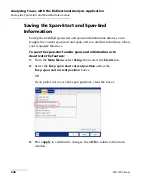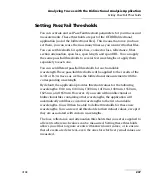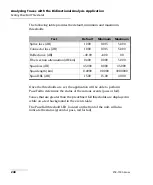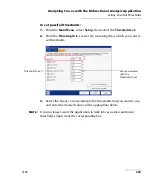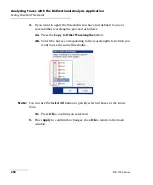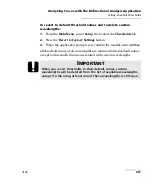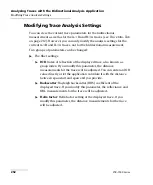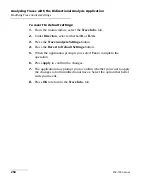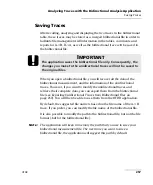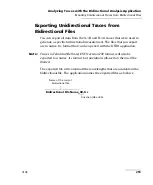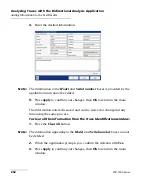
Analyzing Traces with the Bidirectional Analysis Application
OTDR
247
Setting Pass/Fail Thresholds
Setting Pass/Fail Thresholds
You can activate and set Pass/Fail threshold parameters for your traces and
measurements. These thresholds are part of the OTDR Bidirectional
application (not of the bidirectional files). This means that once you have
set them, you can reuse them as many times as you want with other files.
You can set thresholds for splice loss, connector loss, reflectance, fiber
section attenuation, span loss, span length, and span ORL. You can apply
the same pass/fail thresholds to several test wavelengths or apply them
separately to each one.
You can set different pass/fail thresholds for each available
wavelength.These pass/fail thresholds will be applied to the results of the
A->B or B->A traces as well as the bidirectional measurement with the
corresponding wavelength.
By default, the application provides threshold values for the following
wavelengths: 1310 nm, 1383 nm, 1390 nm, 1410 nm, 1490 nm, 1550 nm,
1625 nm, and 1650 nm. However, if you work with unidirectional or
bidirectional files containing other wavelengths, the application will
automatically add these custom wavelengths to the list of available
wavelengths. You will then be able to define thresholds for these new
wavelengths. You can revert all thresholds to their default values, except if
they are associated with custom wavelengths.
The loss, reflectance and attenuation thresholds that you set are applied to
all events where such values can be measured. Setting these thresholds
allows you either to ignore events with known lower values, or to ensure
that all events are detected—even the ones for which very small values are
measured.














